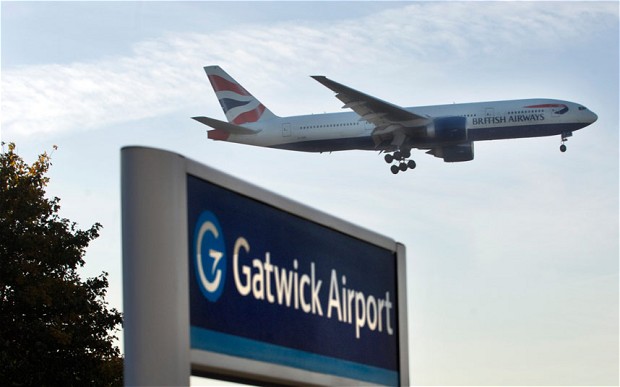Gatwick investing in new accessibility facilities, including world first hoist equipment, specialist toilets and sensory rooms

On the first anniversary of Gatwick’s award winning Hidden Disability Lanyard service, the airport can also announce that it has purchased an Eagle Hoist 4 – a passenger lifting facility that provides safer and more respectful transfer for wheelchair users requiring full assistance to their aircraft seat.
The airport is also investing in two specialist hoist assisted toilet facilities in the next 12 months, each with a height adjustable adult sized changing bench, for people with learning and physical disabilities who may need extra equipment and space to use toilets safely, comfortably and with dignity.
As part of the airport’s ongoing commitment to improve accessibility, Gatwick is also looking to invest in two new sensory rooms for people with sensory processing difficulties such as autism, to brain injury and dementia. The airport is seeking to build a sensory room in each terminal to help improve the mental or physical wellbeing of passengers.
The Eagle Hoist 4 is designed to safely transfer aviation passengers requiring full assistance to and from wheelchairs and aircraft seats in commercial passenger jets. The facility can improve the passenger experience for people with reduced mobility considerably and Gatwick is the first airport in the world to purchase this latest model.
The new hoist assisted toilets and changing facilities are different to, and should be provided in addition to, standard disabled toilets. The current plan is for the new facilities to be built landside in both terminals, complementing existing Changing Places toilet facilities already located airside in both terminals. The facilities are designed for people with profound and multiple learning difficulties or physical disabilities such as spinal injuries, muscular dystrophy, Motor Neurone Disease and multiple sclerosis.
The new sensory rooms will be dedicated spaces designed to block out noise, control space, temperature and lighting to stimulate the senses, promote pleasure and feelings of well-being. The rooms can be transformed from a calming and soothing place, to an exciting and engaging interactive space full of light and sound according to the needs of the passengers that use them.
Nikki Barton, Head of Terminals, Gatwick Airport, said:
“We are delighted to be investing in these new facilities as they will improve the welfare of our passengers and make their journey through the airport as pleasant and stress free as possible.
“We’ve purposely announced these new facilities on the first anniversary of the Hidden Disabilities Lanyard as we want to use the opportunity to raise awareness of the issue among other airports, transport providers and public-serving organisations. The experience we have had with the lanyard has been very positive and, along with our partners OCS, we would encourage other organisations to implement similar schemes to help identify passengers who may require additional support.”
Maria Cook, Gatwick’s Autism Ambassador said:
“Airports are stressful environments for many people with a disability and these new facilities will greatly improve the airport experience for those needing to use them. They are a necessity, not a luxury.
“Today’s announcement is also a fantastic way to mark the first anniversary of the Hidden Disability Assistance Programme. It is vital that we keep accessibility issues front of mind and by showcasing what are are doing here at Gatwick we hope that this will encourage other airports and transport providers to step up and continue to drive for the necessary changes and improvements as well.”
Ruth Rabet, Head of Assisted Customer Operations, OCS – the company that runs Gatwick’s Passengers with Reduced Mobility service, said:
“Since the launch of the lanyard on May 18 2016, this hidden disability secret sign has made a significant difference to thousands of people, plus their families and carers travelling through Gatwick. The lanyard has given some of them the confidence to fly for the first time and to experience a seamless journey through the airport, in what can be a disabling environment.
“To date, we have given out over 5000 lanyards at Gatwick, and have launched it in Manchester, Glasgow, Bristol and very soon in Belfast and Birmingham too.”
